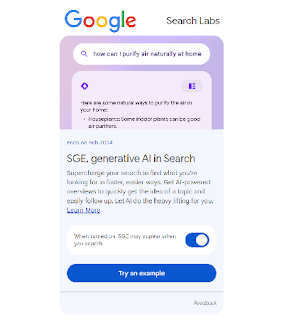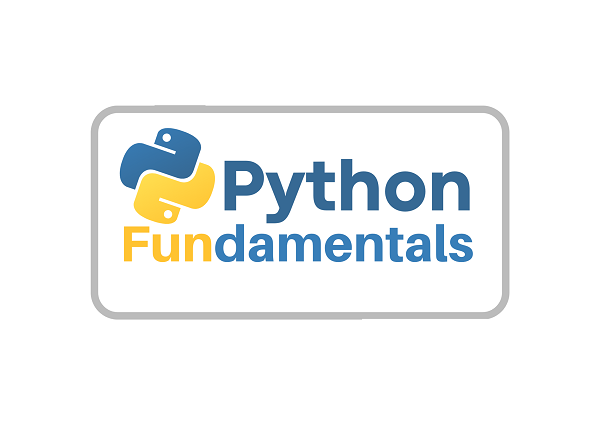Top 7 Programming Languages Essential for AI Developers: Python, C++, Java, R, Julia, Lisp, MATLAB
Learn about the top 7 programming languages that are essential for AI developers, including Python, C++, Java, R, Julia, Lisp, and MATLAB. Find out their advantages and disadvantages, and which one is the best fit for your AI project.
Artificial Intelligence (AI) has emerged
as one of the most significant technological advancements in recent times. AI
developers are in high demand, and it's crucial to possess the right skills to
become one. One of the most crucial skills an AI developer should have is
programming knowledge. There are several programming languages essential for AI
development.
In this article, we'll be discussing the seven programming languages that every AI developer should know.
Programming Language 1: Python
Python is one of the most widely used programming languages for AI development. It is a high-level, interpreted programming language that is easy to learn and has an extensive range of libraries that support AI development. Python provides numerous features like dynamic typing, automatic memory management, and an interactive interpreter that make it an excellent choice for AI development.
Libraries for AI development
Python has a vast range of libraries specifically designed for AI development. Some of the popular libraries for AI development are:
1. NumPy: It's a library
that enables scientific computing in Python. NumPy provides support for large,
multi-dimensional arrays and matrices.
2. Pandas: It's a library
used for data manipulation and analysis. Pandas provide support for data
structures like data frames and series.
3. TensorFlow:
It's a library that provides support for building and training deep learning
models. TensorFlow supports both CPU and GPU processing.
Advantages of using Python for AI development
There are several advantages of using Python for AI development. Some of them are:
- Easy to learn: Python has a simple and easy-to-understand syntax that makes it easy for beginners to learn.
- Extensive range of libraries: Python has a vast range of libraries that support AI development.
- Flexibility: Python is a versatile language and can be used for various purposes like web development, machine learning, and data analysis.
Programming Language 2: Java
Java is a popular programming language used for AI development. It's an object-oriented language that has a robust and mature ecosystem. Java provides several features like platform independence, scalability, and security, making it an excellent choice for AI development.
Advantages of using Java for AI development
There are several advantages of using Java for AI development. Some of them are:
- Platform Independence: Java code can be run on any platform, making it highly versatile.
- Scalability: Java provides support for multi-threading, making it highly scalable.
- Security: Java has a robust security model that makes it a popular choice for building secure systems.
Libraries for AI development
Java has several libraries specifically designed for AI development. Some of the popular libraries for AI development are:
- Deeplearning4j: It's a deep learning library specifically designed for Java.
- Encog: It's a machine learning framework that provides support for neural networks, genetic programming, and support vector machines.
- Weka: It's a collection of machine learning algorithms that provides support for data mining and predictive modeling.
Programming Language 3: C++
C++ is a high-performance programming language that is widely used in AI development. It is an extension of the C programming language and provides additional features such as object-oriented programming and templates. It's an object-oriented language that provides several features like performance, control, and efficiency, making it an excellent choice for AI development.
Advantages of using C++ for AI development
There are several advantages of using C++ for AI development. Some of them are:
- Performance: C++ is a highly performant language and is suitable for building complex AI systems.
- Control: C++ provides low-level control over system resources, making it suitable for building real-time systems.
- Efficiency: C++ is an efficient language that can manage memory effectively, making it suitable for building resource-intensive AI systems.
- Library support: C++ has a wide range of libraries that can be used for AI development, such as the popular machine learning library, TensorFlow.
- Cross-platform compatibility: C++ can be compiled to run on different platforms, making it a versatile language for building AI systems that can run on different devices.
Disadvantages of using C++ for AI development
There are also some disadvantages to using C++ for AI development. Some of them are:
- Complexity: C++ can be a complex language to learn and use, especially for beginners.
- Memory management: While C++ can manage memory efficiently, it also requires developers to manually allocate and deallocate memory, which can be time-consuming and error-prone.
- Error-prone: C++ is a low-level language that provides developers with a lot of control over the system, which can also lead to more errors and bugs in the code.
- Steep learning curve: C++ is a language that requires a lot of practice and experience to master, making it difficult for beginners to get started with AI development.
Overall, C++ is a powerful language for AI
development that offers high performance and low-level control over system
resources. However, it also requires a significant amount of experience and
skill to use effectively.
Programming
Language 4: R
R is an open-source programming language that is widely used for statistical computing and graphics. It provides a wide range of statistical and graphical techniques, making it a popular choice for data analysis and visualization.
Advantages of using R for AI development:
- Comprehensive statistical capabilities:
R offers a wide range of statistical techniques for data analysis and modeling,
making it a popular choice for data scientists and AI developers.
- Active and supportive community:
The R community is large and active, providing access to a wealth of resources,
packages, and forums for support.
- Flexible and customizable:
R is highly customizable, with many packages and libraries available for a wide
range of applications, making it suitable for building AI models.
- Open-source:
Being open-source, R is free to use, modify, and distribute, making it a
cost-effective option for AI development.
- Integration:
R integrates well with other programming languages and tools, making it a
versatile choice for data science and AI projects.
Disadvantages of using R for AI development:
- Steep learning curve:
R can be difficult to learn for beginners, with a steeper learning curve than
some other programming languages.
- Memory management:
R has limitations in terms of memory management, which can lead to performance
issues when dealing with large datasets.
- Limited support for large-scale computing:
R is not well-suited for large-scale computing, which can limit its use in some
AI applications.
- Performance:
R can be slower than some other programming languages for certain tasks, such
as machine learning algorithms, which require high-performance computing.
In summary, R is a popular choice for AI development due to its comprehensive statistical capabilities, active community, and flexibility. However, its steep learning curve, limited memory management, and performance limitations for large-scale computing may make it less suitable for some AI applications.
Programming
Language 5: Lisp
Lisp is a family of computer programming languages that are designed for the purpose of building artificial intelligence (AI) systems. Lisp stands for "LISt Processing" and was first developed in the late 1950s. It is known for its powerful support for symbolic processing and functional programming.
Advantages of using Lisp for AI development:
- Expressive power:
Lisp's syntax and semantics make it a very expressive language, which allows AI
developers to write code that is easy to read, write and understand.
- Symbolic processing: Lisp is particularly well-suited for AI development because of its support for symbolic processing, which is essential for tasks such as natural language processing and knowledge representation.
- Dynamic typing:
Lisp is dynamically typed, which means that variables can hold values of any
type. This makes it easier for AI developers to write code that is more
flexible and adaptable.
- Interactivity: Lisp has a powerful interactive development environment, which allows AI developers to quickly test and debug their code.
Disadvantages of using Lisp for AI development:
- Steep learning curve: Lisp has a reputation for being difficult to learn, and its syntax and semantics can be challenging for some developers to master.
- Limited community: Lisp has a relatively small user base compared to other programming languages, which means that finding support and resources can be difficult.
- Performance issues: Lisp can be Lisp can be slower than other languages such as C++ or Java, especially when it comes to large-scale data processing. This can lead to performance issues and longer processing times.
- Learning curve: Lisp has a steep learning curve, and it may take some time for developers to get used to its syntax and unique features. This can make it challenging for developers who are new to the language.
- Limited community support: Compared to other languages such as Python or R, Lisp has a smaller community, which can limit the availability of resources, libraries, and support. This can make it more difficult to find solutions to problems or get help when needed.
Despite these limitations, Lisp remains a popular choice for AI development due to its unique features and capabilities. With its functional programming paradigm and advanced language features, Lisp offers a powerful and flexible toolset for building complex AI systems.
Programming
Language 6: Julia
Julia is a high-level, dynamic programming language designed for numerical and scientific computing, data analysis, machine learning, and parallel computing. It was developed by a group of researchers and programmers from MIT, and released in 2012. Julia is designed to be fast, flexible, and easy to use, with a syntax that is similar to that of MATLAB and Python. It is also open-source and free to use, and has a growing community of users and developers who are contributing to its development and expanding its capabilities.
Advantages of using Julia for AI development
Julia is a relatively new language designed specifically for numerical and scientific computing. It offers several advantages for AI development, such as:
- Speed: Julia is designed to be fast, with performance that can rival or surpass that of languages like C and Fortran.
- Interoperability: Julia can interface easily with other programming languages like Python, C, and R, making it easy to incorporate existing libraries and tools into your AI projects.
- Ease of use:
Julia has a clean syntax and is easy to learn, making it a great choice for
beginners in AI development.
Disadvantages of using Julia for AI development
Despite its advantages, there are some limitations to using Julia for AI development:
- Maturity: Julia is a relatively new language, and while it has gained popularity in recent years, it is still not as widely used as other languages like Python and R.
- Lack of libraries: While Julia has a growing collection of libraries, it still lags behind other languages like Python and R in terms of the number and variety of available libraries.
Programming
Language 7: MATLAB
MATLAB is a programming language and
numeric computing environment that is widely used in engineering, mathematics, and
scientific research. It was developed by MathWorks and first released in 1984.
MATLAB stands for Matrix Laboratory, reflecting its primary feature of working
with matrices and arrays. It provides a wide range of tools for numerical
computation, data analysis, visualization, and algorithm development. MATLAB is
known for its ease of use, high-level programming language, and extensive
libraries of pre-built functions and toolboxes. It is commonly used in fields
such as signal processing, image processing, control systems, and machine
learning.
Advantages of using MATLAB for AI development
MATLAB is a popular language for numerical computing and data analysis. It offers several advantages for AI development, such as:
- Ease of use: MATLAB has a simple, intuitive syntax that makes it easy to learn and use.
- Visualization: MATLAB offers powerful visualization tools, making it easy to explore and analyze data.
- Toolboxes: MATLAB comes with a large number of toolboxes for various applications, including machine learning, making it easy to get started with AI development.
Disadvantages of using MATLAB for AI development
While MATLAB has many advantages, there are also some limitations to using it for AI development:
- Cost: MATLAB is a commercial product and can be expensive to purchase and license, making it less accessible to individual developers and small businesses.
- Limited open-source community: While MATLAB has a large user community, it is mostly focused on commercial applications and may not have as much open-source support as other languages like Python.
- Limited customization:
MATLAB has limited customization options, making it difficult to tailor to
specific needs.
Choosing the Right Programming Language for Your AI Project
Choosing the right programming language is
critical for the success of any AI project. While all of the programming
languages discussed above have their advantages and disadvantages, the choice
ultimately depends on the specific requirements of the project.
Here are some factors to consider when choosing the right programming language for your AI project:
1. Nature of the problem: The nature of the AI problem you are trying to solve should be the primary consideration when choosing a programming language. For example, if your project involves natural language processing, then Python may be the best choice. On the other hand, if you are building a real-time system that requires high-performance, then C++ may be a better option.
2. Availability of libraries and frameworks: The availability of libraries and frameworks is crucial when choosing a programming language. The more libraries and frameworks available, the easier it will be to build the AI system. Python, for example, has a vast range of libraries and frameworks available, making it an excellent choice for many AI projects.
3. Skillset of the team: The skillset of your development team should also be taken into account when choosing a programming language. If your team is more familiar with Java, then it may be easier for them to build the system using Java than another language.
4. Compatibility with existing systems:
If you have an existing system that you need to integrate with the AI system,
then the programming language used for the existing system should also be taken
into account. Choosing a programming language that is not compatible with the
existing system can lead to significant complications during integration.
Conclusion:
The field of artificial intelligence is growing rapidly, and programming languages are an essential part of this growth. As we have seen, there are several programming languages that are suitable for AI development, each with its advantages and disadvantages. It is essential to carefully evaluate the requirements of the project and the skillset of the development team before choosing a programming language.
By selecting the right programming language and leveraging the available libraries and frameworks, developers can build sophisticated AI systems that can automate tasks, make intelligent decisions, and solve complex problems. As AI continues to revolutionize various industries, the demand for skilled AI developers proficient in multiple programming languages is only going to increase.
There are many programming languages that are essential for AI developers. Each language has its own advantages and disadvantages, and the choice of language will depend on the specific needs of the project. Python remains the most popular language for AI development due to its versatility and ease of use, but other languages such as C++, Java, Julia, R, Lisp, and MATLAB have their own unique strengths that can be beneficial for AI development. As the field of AI continues to evolve, it is important for developers to stay up-to-date with the latest developments and choose the right tools for the job.




Comments
Post a Comment